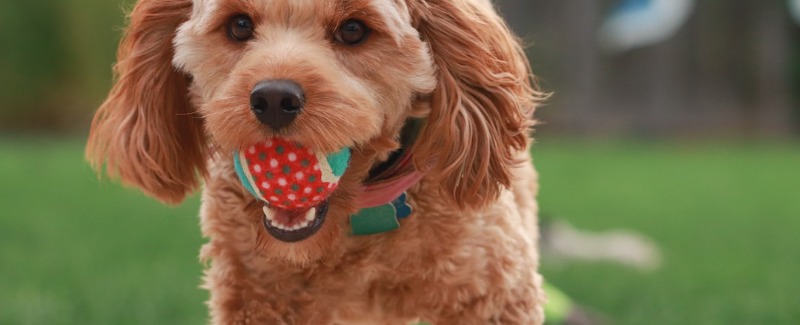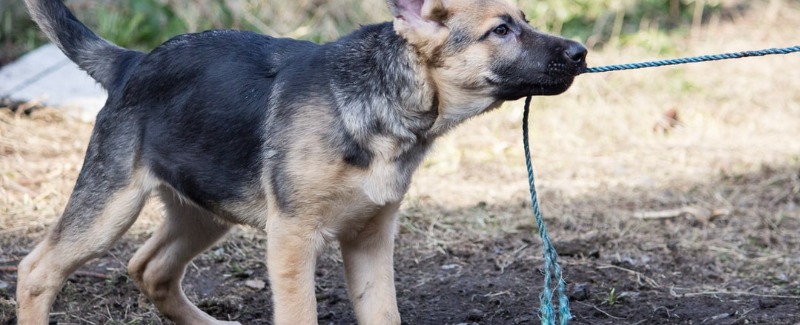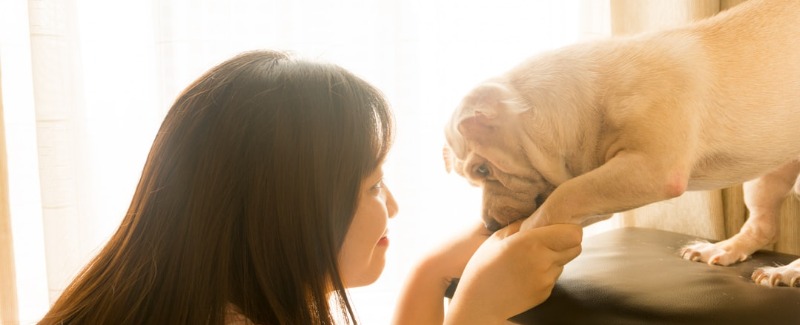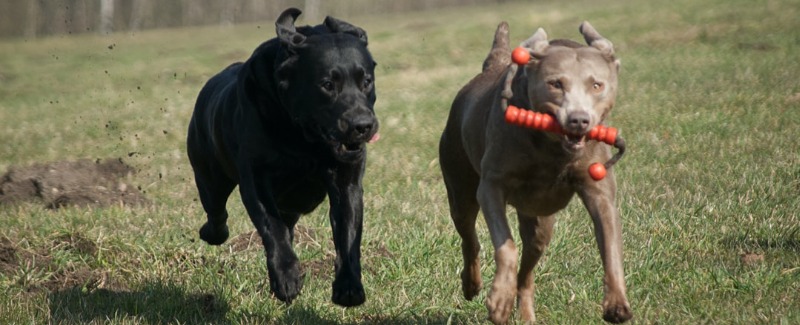The ultimate game of cooperation, fetch (or retrieving) is a terrific way to both build cooperation and wear your dog out. Some dogs are natural retrievers, but most dogs with even a slight interest in toys can be taught to enjoy retrieving.
The Two-toys Game
The two-toys game is a great way to get your dog started retrieving. As you’ve no doubt already guessed, you’ll need two toys to play. These toys are yours, so they are not available to your dog to play with all the time. The toys you use should be identical, like tennis balls, or short lengths of rubber hose (you can get pieces of rubber hose cut at most auto-supply or home-improvement stores), but it really doesn’t matter what you use as long as you have two of them and your dog can be enticed to pick them up. The beauty of this game is that by its very nature, it encourages your dog to come back and give up the toy right from the beginning, with no begging, pleading, or chasing required.
For dogs that are obsessed with retrieving, there are several toys on the market, the Chuck-it, for example, designed to greatly increase the distance of the throw. These involve low effort for you, and great exercise for your dog!
To start, take your dog to a fairly open area, at least 20 feet across. Stand in the middle of the area, and get your dog interested in one of the toys by teasing her with it, throwing it in the air and catching it a few times, or squeaking it if it has a squeaker. When she’s excited about the toy, throw it a short distance — 5 feet or so — to one side. As soon as she picks up the toy, start playing with the second one. Keep playing with it until your dog drops the first one, then toss the second toy in the opposite direction, again, just a short distance for now. As she’s on her way to pick up the second toy, pick up the first one. Repeat the process a few times, gradually increasing the distance of the throw.
It is very important during the early stages of playing this game that you quit each retrieve session while your dog is still very enthusiastically retrieving the toy, even if that means quitting after just a few repetitions. You can increase the number of retrieves as she builds desire for the game, along with introducing the fetch command as soon as she’s regularly picking up and returning with the toy. As her retrieving skills improve and become reliable, challenge her by having her sit and wait while you throw the toy, and then release her to fetch it. You might also raise your criteria for reward (in this case, throwing the toy again) by teaching your dog to bring the toy to you by sitting in front of you with it and waiting until you ask for it, or by delivering it to your hand, rather than dropping it at your feet.
Working with the Non-retriever
Even dogs that don’t retrieve naturally can usually be taught to enjoy the game. There are several of ways to go about teaching the non-retriever to fetch. If your dog has any interest in toys at all, figure out what kind of toys are his favorites, remove them from his environment, and put them somewhere where he can’t get them. This is just a temporary measure to build motivation; he’ll get his toys back.
You are going to play the two-toys game, so make sure you have two of his favorite toy, even if you have to buy two new ones. Bring one of the toys you’ll use for retrieving out and play with it by yourself, squeaking it, and then tossing it in the air or between family members. Show it to your dog, entice him to follow it, and whip it away before he has a chance to grab it. Put the toy away. Repeat a couple of times a day for several days, never letting your dog actually take the toy.
When you can predict that he’ll be excited to see the toy, get him all worked up, then toss one of the toys a couple of feet away, and do just one repetition with the second toy the first time (get the second toy back with an exchange for a treat if necessary). Each day, add distance and repetition until he’s reliably fetching.
If your dog doesn’t care about toys, you can shape a retrieve using your CR, treats, or both to mark and reward tiny steps toward the finished retrieve. Make sure each step is solid and on a variable reinforcement schedule (your dog will perform each step several times for one CR/treat) before raising your criteria for reward. You might break down the shaped retrieve into the following steps:
- Looking at the retrieve object.
- Nosing it.
- Mouthing or licking it.
- Gripping it.
- Holding it (you can teach your dog to hold until you ask for the object at this point if you want).
- Picking it up from floor.
- Chasing and picking it up from a short toss.
- Returning with it.
- Adding distance.
Depending on your dog, you might add or delete steps. Be patient; it may take several weeks of consistent work to teach your dog to retrieve.
If you’re planning on doing obedience competition with your dog, it’s a good idea to work with an experienced instructor to help you teach your dog a correct competition-style retrieve. It’s always wise to teach your dog how to do it correctly from the beginning, rather than trying to undo old habits.





